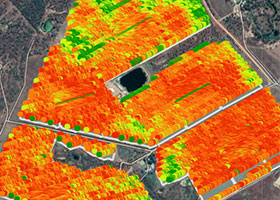In-Field Estimation of Fruit Quality and Quantity
A special issue of Agronomy (ISSN 2073-4395). This special issue belongs to the section "Precision and Digital Agriculture".
Deadline for manuscript submissions: closed (31 March 2021) | Viewed by 48498

Special Issue Editor
Interests: near-infrared spectroscopy (NIRS); horticultural production; plant physiology
Special Issues, Collections and Topics in MDPI journals
Special Issue Information
Dear colleagues,
Advances in machine vision, image processing, spectroscopy and other technologies are allowing in field assessment of various fruit crop attributes. This includes estimation of optimum harvest timing through use of remote temperature monitoring technologies, automated assessment of flowering stage and level, near infra red spectroscopic assessment of fruit attributes, fruit detection, counting and sizing. Effectively there is a shift in technology from use in the controlled environment of the packhouse to use in the uncontrolled field environment of the orchard. These tools can inform farm management decisions on crop agronomy, harvest timing, harvest resourcing (labour and materials) and marketing. A call is open for original papers which address the development or application of such technologies in the application of fruit quality and quantity, with extension to the use of these technologies in automation of fruit harvest.
Prof. Dr. Kerry Brian Walsh
Guest Editor
Manuscript Submission Information
Manuscripts should be submitted online at www.mdpi.com by registering and logging in to this website. Once you are registered, click here to go to the submission form. Manuscripts can be submitted until the deadline. All submissions that pass pre-check are peer-reviewed. Accepted papers will be published continuously in the journal (as soon as accepted) and will be listed together on the special issue website. Research articles, review articles as well as short communications are invited. For planned papers, a title and short abstract (about 100 words) can be sent to the Editorial Office for announcement on this website.
Submitted manuscripts should not have been published previously, nor be under consideration for publication elsewhere (except conference proceedings papers). All manuscripts are thoroughly refereed through a single-blind peer-review process. A guide for authors and other relevant information for submission of manuscripts is available on the Instructions for Authors page. Agronomy is an international peer-reviewed open access monthly journal published by MDPI.
Please visit the Instructions for Authors page before submitting a manuscript. The Article Processing Charge (APC) for publication in this open access journal is 2600 CHF (Swiss Francs). Submitted papers should be well formatted and use good English. Authors may use MDPI's English editing service prior to publication or during author revisions.
Benefits of Publishing in a Special Issue
- Ease of navigation: Grouping papers by topic helps scholars navigate broad scope journals more efficiently.
- Greater discoverability: Special Issues support the reach and impact of scientific research. Articles in Special Issues are more discoverable and cited more frequently.
- Expansion of research network: Special Issues facilitate connections among authors, fostering scientific collaborations.
- External promotion: Articles in Special Issues are often promoted through the journal's social media, increasing their visibility.
- e-Book format: Special Issues with more than 10 articles can be published as dedicated e-books, ensuring wide and rapid dissemination.
Further information on MDPI's Special Issue polices can be found here.





